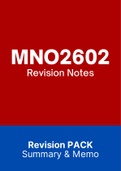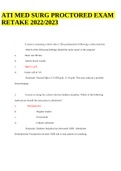College aantekeningen
ALLE hoorcollege aantekeningen MN&NA 2021!
Aantekeningen van alle hoorcolleges uit de cursus Medical Neuroscience & Neuro-anatomy, master Klinische Neuropsychologie VU Amsterdam . Bevat tevens afbeeldingen vanuit de slides. Belangrijke begrippen/tentamen 'hints' zijn dikgedrukt/gemarkeerd. Meeste in het Engels, sommige samenvattingen...
[Meer zien]













